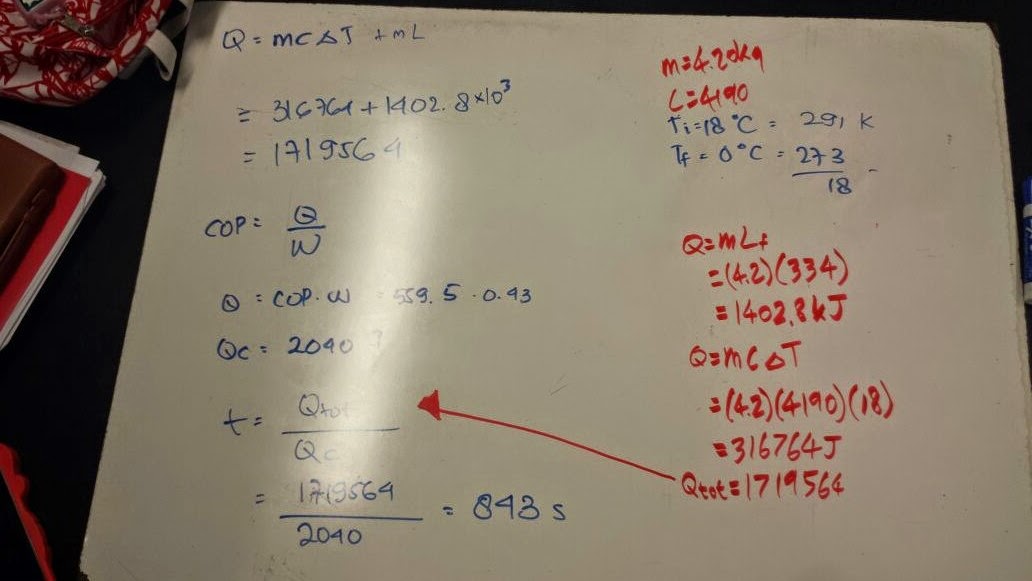Spring 2015
Professor Mason
March, 12th
Thermal Electric Cooler
The first thing we did in class was an experiment about a thermoelectric cooler, which involves boiling water and ice water. This thing works just like rooftop solar panels, and it is dependent on the sun because heat is the source.
As shown on the picture above, one side of the cooler is dipped into boiling water and the other one is dipped into ice water. Therefore, we can conclude that temperature difference make the motor starts or make electricity (the circle plate starts spinning with a certain direction). Next, we flip the sides of the cooler, and what happened was the circle plate went into the opposite direction. The next thing we did was to take out the motor and plug in the power supply into the cooler.
This time, we did not put the cooler into any water, however, by plugging in the cooler into the power supply, it makes some temperature difference out of electricity. Therefore, we can conclude that power supply can turn electricity into temperature difference because it is acting as a heat pump.
Heat Capacity
In class, we learned about heat capacity; we started with molar heat capacity. Molar heat capacity is defined as heat per unit change of temperature [C = Q/delta T]. Molar heat capacity of the gas is defined by and equation [C molar = Q/ (n*delta T)], which n is defined as molar.

We define isobaric process by an equation [Q = n*Cp*delta T], which Cp is a constant that equals to [5R/2]. We also define isochoric process by an equation [Q = n*Cv*delta T] (noble gas), which Cv is a constant equals to [3R/2]. We also had an adiabatic process, which the equation can be simplified as [(delta P/P) + ((Cp*deltaV)/(V*Cv)) = 0]. For adiabatic process, we can say that Q = 0, which leads to a simplified equation of
[(Ti*Vi^2/3) = (Tf*Vf^2/3)].
Carnot Engine
In class, we discussed about an engine other than heat engine, which is Carnot engine. We were supposed to do calculations based on Carnot engine by using equations [Qc = nRTc ln(Vi/Vf)] and [Qh = nRTh ln(Vi/Vf)]. We can simplify those equations into [(Qc/Qh) = (Tc/Th)]. By using those equations, we needed to find delta E internal, Q, and W by making table based on the ABCD diagram on the picture above.
Heat Engine Experiment
In class, we got to play with a sample of heat engine that professor Mason provided.

As professor Mason explained the heat engine, he stated that when the radiator in a car is cooled and the engine produces heat, it provides efficiency. The constants for heat engine are: Monoatomic [u = (3/2) NkT], Rigid diatomic molecule [u = (5/2) NkT], Vibrating [u = (7/2) NkT].
There are some steps in heat engine, and these are the following:

First, the TDC is pushed down, the valve opens, air and fuel are pulled in (Intake Cycle). Second, the valve closes, volume decreases slightly, pressure increase greatly, and temperature increases (Compression Stroke). Third, high pressure area, cylinder go down, pressure decreases, volume increases, but still has fairly high pressure, and ignition (Power Stroke). Fourth, valve opens, piston moves upward, and go back to intake cycle again (Exhaust Stroke). Based on all the steps above, the only process that does work is power stroke because the volume is positive/increased.
There are ways to increase Power output in an engine, and below are the following:
1. Increase cycle per second.
2. Larger volume of cylinder of the piston.
3. Increase maximum pressure.





























































